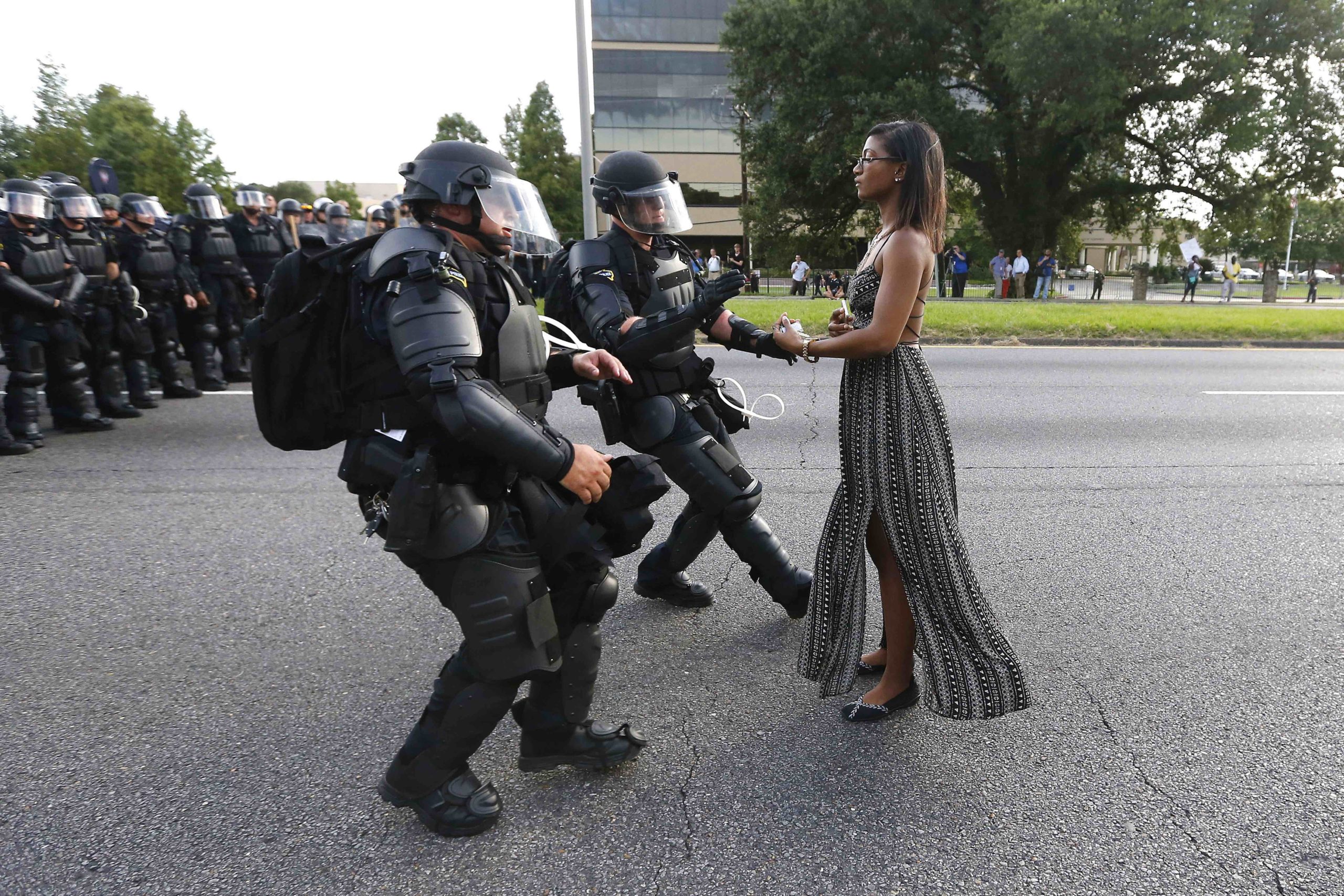Democracy and justice are not just words; they are ideals that must continually be practiced by everyone living in a society.
Because justice is an on-going effort, the Justice & Democracy Centers of Minnesota offer space for rotating content to foster discussion on topics relevant to today.
Visit the center to learn about our inaugural theme: the Duluth lynchings of 1920 and what it looks like when the rule of law fails.
On View in the Flex Space
Jan 15, 2021 – Feb 02, 2022
Justice Denied
In 1920, Duluth was home to one of the most shameful episodes in Minnesota’s history. Three African American men were accused of a crime with minimal evidence. Before they could have their day in court, an angry mob took matters into its own hands.
A century later, we remember their deaths and reflect on the rights that they were denied.


In the summer of 1920, racial tensions ran high throughout the United States.
Lynchings and overt racism had long been associated with the South. Many African Americans joined the “Great Migration” and moved north. They came looking for new opportunities, but found racism here too.
Race riots had erupted in several cities in the summer of 1919, including cities across the north. Dozens had been killed. Although the violence subsided, tension remained.
The Circus Is in Town
In June 1920, the John Robinson Circus came to Duluth. Among the workers who helped set up and break down the circus tent were three young Black men: Elias Clayton, Elmer Jackson, and Isaac McGhie.
After the show, two white teenagers from Duluth, James Sullivan and Irene Tusken, watched the workers break down the tent. What happened next is unclear. But it left its mark on Minnesota history—and on the lives of three of the young men from the circus crew.
Questionable Claims
Later that night, Sullivan told his father that several of the workers had attacked them and raped Tusken. But it’s unclear what really happened. A doctor examined Tusken the following morning and found no evidence of an assault. The two teenagers could only offer a vague description of their supposed attackers.
Locked Up
Sullivan’s father contacted police, who stopped the circus train from leaving town. All of the workers were lined up for questioning. Tusken and Sullivan couldn’t identify any of the men as the attackers. But even so, six were arrested and brought to the city jail. Clayton, Jackson, and McGhie were among them.
Rumors and Rage
Word of the alleged rape quickly spread throughout the city. As the story traveled, it changed too. Before long, people were saying that Irene Tusken had died of her injuries. In reality, she had no injuries whatsoever. But fueled by racism and fear, the story had taken on a life of its own.
A Murderous Mob
By that evening, thousands of angry people had congregated outside the police station. Police were ordered not to use their guns to defend the prisoners. The mob broke in using bricks and heavy timbers to smash the cell locks, and pulled the prisoners out.
The crowd subjected Clayton, Jackson, and McGhie to a brief mock trial, but the three men never stood a chance. They were stripped, beaten, and hanged on a lamppost.
“They’re Selling Postcards of the Hanging…”
Members of the crowd celebrated and posed for photos around the dead men. One of the photos was even reprinted on postcards. Duluth native Bob Dylan referenced this incident in his song Desolation Row.
Visit the Justice & Democracy Center’s St. Paul location to view historical images from the lynchings.
Reckoning with the Past
How does a city move forward after such an atrocity? The lynchings were a shameful chapter in Duluth’s history. But for decades, they went mostly unacknowledged.
Eventually, Duluth decided to confront its past instead of ignoring it. In 2003, the city built the Clayton-Jackson-McGhie Memorial across the street from the site of the lynchings. It is a testament to the horrific cost of racism and injustice. Today, the memorial remains a hub of community activism and advocacy.
Vigilante Justice = No Justice
The Duluth lynchings illustrate the importance of due process—and the tragic consequences of “vigilante justice”. Members of the lynch mob may have believed that they were speeding up justice. But by acting outside law, they made it impossible.
There was already a process for finding the truth of what happened — a trial before a jury. But Elias Clayton, Elmer Jackson, and Isaac McGhie never had that chance.
Doing Justice
Every person has a responsibility to work for justice. That includes creating and supporting a just process. Have you ever found yourself jumping to conclusions about a case in the news? Do you believe that our justice system will produce the right result? If not, what can you do to improve it?
Prosecuting the Lynch Mob
In the aftermath, officials vowed to punish those responsible for the lynchings. But they had limited success. Only three men were convicted of rioting, and they all served short prison sentences. Nobody was ever prosecuted for the murders of Elias Clayton, Elmer Jackson, and Isaac McGhie.
Prosecuting the Survivors
Two of the surviving circus workers were prosecuted for rape. William Miller was acquitted. But even a supposedly “fair” trial wasn’t enough for Max Mason. Although the evidence presented by the prosecution was flimsy, he was convicted and served four years in prison. His sentence was far longer than the sentences of anybody in the lynch mob.
In 2020 Max Mason was given the first posthumous pardon in Minnesota’s history.
Anti-Lynching Law
One of those horrified by the lynchings was Nellie Francis, an African American activist from St. Paul. She led efforts to pass an anti-lynching law in Minnesota. The law, enacted in 1921, provided compensation for relatives of the victims of lynching. It also required the suspension of police officers who allowed lynchings to happen.
The fight for anti-lycning laws on the federal level continue to this day. How do you plan to ensure justice is never again denied?

